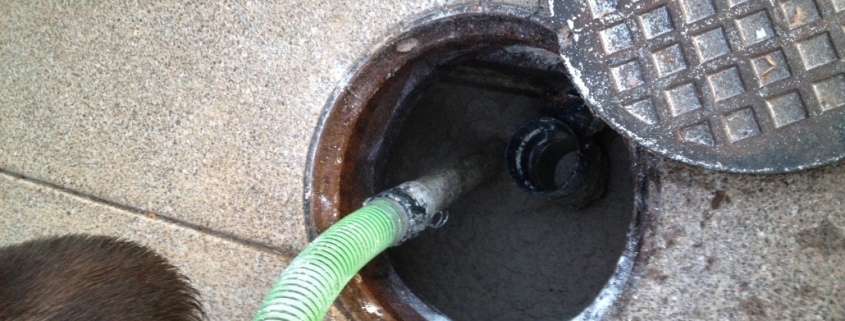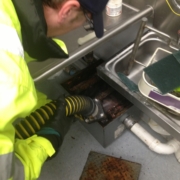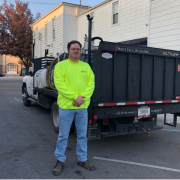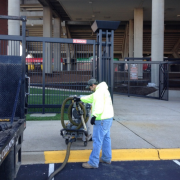Grease Traps vs. Grease Interceptors
Grease traps and grease interceptors are grease collection systems that many establishments use. There are a few key things that differentiate the two systems. Here’s a look at some key similarities and differences.
Grease traps
Grease traps are typically small metal boxes located inside of the business they are used for. They help remove greases and solids from wastewater before it enters the wastewater disposal system. Fats, oils, and grease (FOG) that are commonly disposed of in food-producing businesses can build up in wastewater treatment facilities and septic tanks. When unaddressed, this can overwhelm infrastructure and lead to the release of untreated sewage. These oils can also cool and solidify, combining with other solids in the waste system to block pipes. Grease traps help prevent all of this from the getgo by removing FOG before they enter the system.
Since grease traps are small, several are often used in larger establishments, one per sink. Liquids from sinks flow into the traps, and solids that are more dense than water drop to the bottom while greases (less dense than water) float to the top. The remaining water, which is mostly grease free, is then piped into the waste system. Businesses typically service grease traps on a monthly basis. Health code regulations specify cleaning schedules and procedures.
Grease interceptors
Grease interceptors perform the same function as grease traps. However, they are much larger, with a single interceptor serving an entire establishment. Given the size of the interceptors, they are often located outside of a business and accessed through a maintenance hole cover.
The function and mechanics of grease interceptors are similar to those of grease traps. Dirty water from a business flows into a large container that separates out solids and grease. Interceptors do this with a series of retention reservoirs and baffles (walls). They then pipe cleaned water into the waste system. Given their large size, grease interceptors are usually cleaned once every two or three months.
Cleaning Grease Traps and Interceptors
Both the floating FOGs and the solids at the bottom of the grease traps and interceptors must be regularly disposed of. Professionals like Moon Grease Trap Cleaning can thoroughly pump out, clean and dispose of all grease, wastewater, and solid material from your grease trap system. Plus, they can help keep track of your maintenance schedule and adherence to regulations.
It’s important to regularly schedule cleaning for both types systems. For one, properly functioning systems prevent a negative environmental impact from sewage overflow or blockage. Plus, it can save time and money by preventing a backed up system that can shut down business. Professionals can also make recommendations about cleaning commercial kitchens to mitigate the impact of FOGs on your grease trap or interceptor system and the environment.
Schedule your next grease service by contacting Moon Grease Trap Cleaning at 502-776-2199. We are happy to answer any and all questions you may have.












